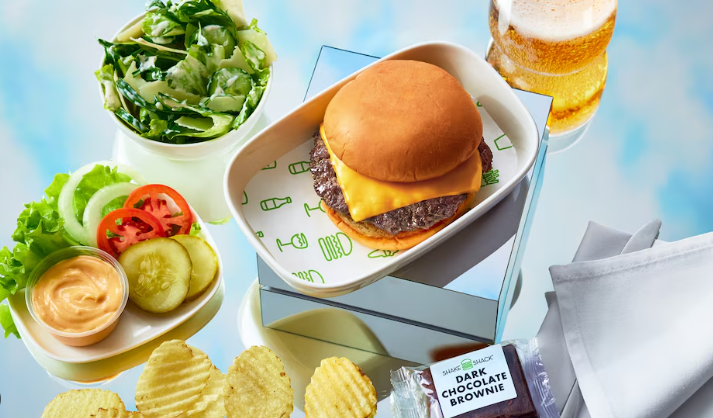Contents [hide]
- 1 Perfecting the Sky – High Burger – Next Stop: Crispy Fries & Avocado Toast
- 2 The Toaster Revolution: How Delta Nailed the In-Flight Burger
- 3 Luxury at Altitude: Why Airlines Are Investing in Gourmet Menus
- 4 From Farm to Tray Table: The Hidden Science of Airline Food
- 5 Why Airline Food Failed—And How Global Rivalry Fixed It
- 6 H2 – Dishes That Defy the Skies: Ice Cream, Fish & Avocado Toast
- 7 The French Fry Frontier: A Crunchy Symbol of Progress
Perfecting the Sky – High Burger – Next Stop: Crispy Fries & Avocado Toast
Airlines once struggled to serve edible cheeseburgers at 35,000 feet. In-flight meals are reheated leftovers: pre-cooked, chilled, and revived midair. This process risks soggy buns, dry patties, and wilted lettuce. Yet partnerships like Delta’s with Shake Shack prove gourmet burgers can thrive above the clouds.
Expanding on this, the challenge isn’t just taste—it’s physics. Cabin pressure and dry air dull flavors, requiring chefs to amplify spices. Airlines now balance culinary creativity with logistical constraints, turning once-mocked meals into premium experiences.
The journey from “mystery meat” to gourmet burgers reflects a seismic shift in airline priorities.

The Toaster Revolution: How Delta Nailed the In-Flight Burger
Delta’s secret weapon? A specialized onboard toaster that revives Shake Shack’s signature buns. On a Boston-Atlanta flight, the burger tasted nearly identical to its ground version—except for missing crispy fries. Most airlines avoid fries due to reheating challenges, but American Airlines tests vented containers to lock in crunch.
Digging deeper, the quest for perfect fries reveals broader hurdles. Starch content, cut style, and airflow all impact texture. Competitors like Delta prioritize quality over speed. “We’re chasing best-in-class, not first-to-market,” says Delta’s Ash Dhokte.
Sometimes, humble tools like a toaster redefine what’s possible at 35,000 feet.
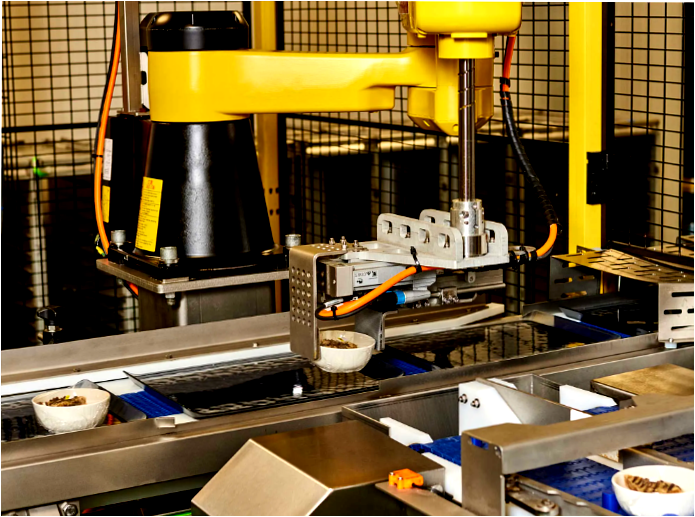
Luxury at Altitude: Why Airlines Are Investing in Gourmet Menus
The Shake Shack partnership highlights a industry-wide pivot to premium dining. Despite economic uncertainty, airlines target high-spenders in front cabins, where profit margins soar. “Great food won’t sell seats, but bad meals damage loyalty,” notes Henry Harteveldt of Atmosphere Research Group.
Expanding further, this shift isn’t just about food—it’s branding. Airlines like Emirates and Singapore Airlines set luxury benchmarks, pushing U.S. carriers to elevate offerings. For business-class travelers, subpar meals now risk reputational fallout.
Gourmet dining isn’t a perk—it’s a survival tactic in a competitive sky.
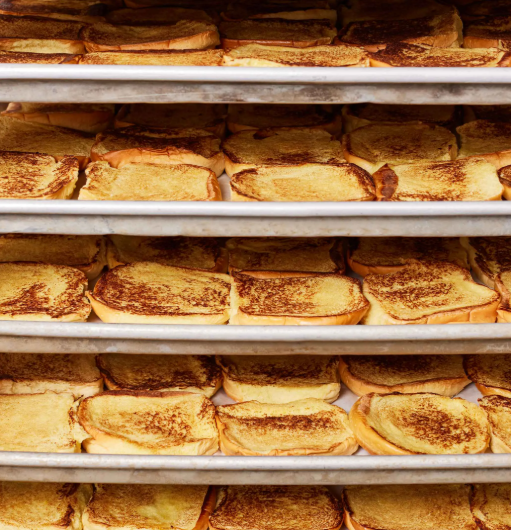
From Farm to Tray Table: The Hidden Science of Airline Food
Every meal undergoes a meticulous journey. At caterer Gategourmet’s Boston hub, 17 lettuce varieties and 82 cheeses are stored under strict protocols. Color-coded tools keep halal and kosher items separate, while Delta’s Atlanta kitchen uses robots for precision assembly.
Zooming in, security is equally critical. Every knife is tracked to prevent misuse, and ingredients face rigorous safety checks. “It’s a logistical ballet,” says United’s Aaron McMillan. Few passengers grasp the complexity behind their chicken or pasta.
Behind that tiny tray is a universe of planning, tech, and sweat.
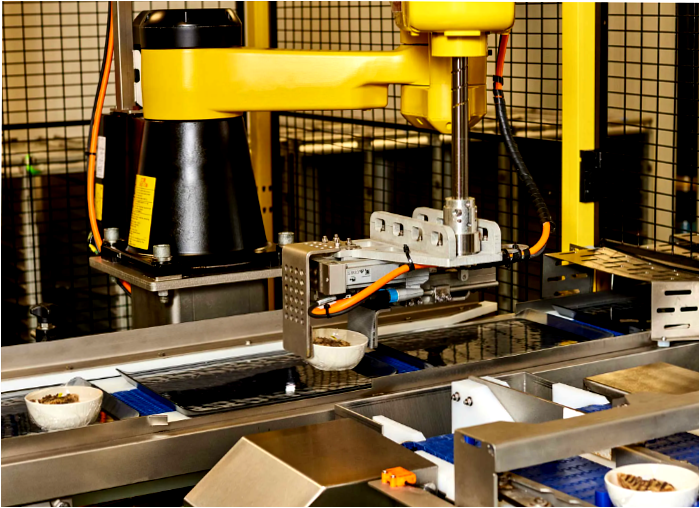
Why Airline Food Failed—And How Global Rivalry Fixed It
For decades, cramped galleys and thin profits made meals an afterthought. Then Middle Eastern and Asian carriers raised the bar. Emirates’ multi-course menus and Singapore’s book-the-cook service forced U.S. airlines to innovate.
Expanding the point, Alaska Airlines now serves Stumptown coffee, while United offers Magnolia Bakery banana pudding. Delta collaborates with Michelin-starred chefs, blending creativity with altitude-friendly recipes. The result? A culinary arms race at 35,000 feet.
Global competition turned airline food from punchline to pride.
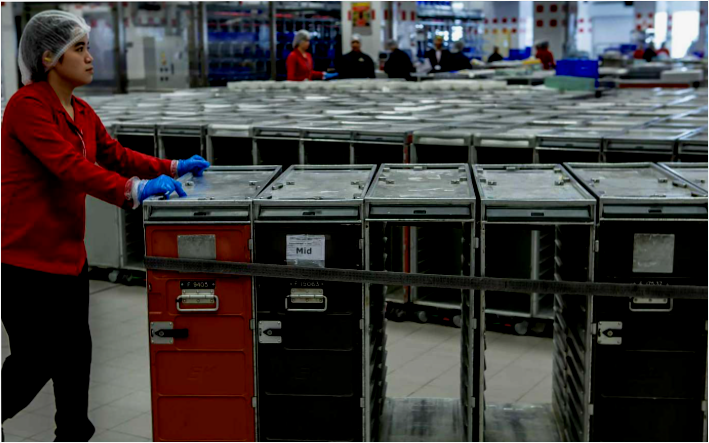
H2 – Dishes That Defy the Skies: Ice Cream, Fish & Avocado Toast
Some foods resist in-flight logic. Alaska abandoned melted ice cream sandwiches, while avocado toast can’t be reheated without ruining texture. Seafood odors are masked with miso marinades, and steak’s medium-rare perfection remains elusive.
Diving deeper, airlines adapt with clever workarounds. Fish cakes shaped like goldfish (“Guppy McGupperson”) add whimsy, while short ribs replace fussier meats. Spices are boosted to combat taste bud dullness from dry cabin air.In-flight menus are a dance between ambition and the laws of physics.
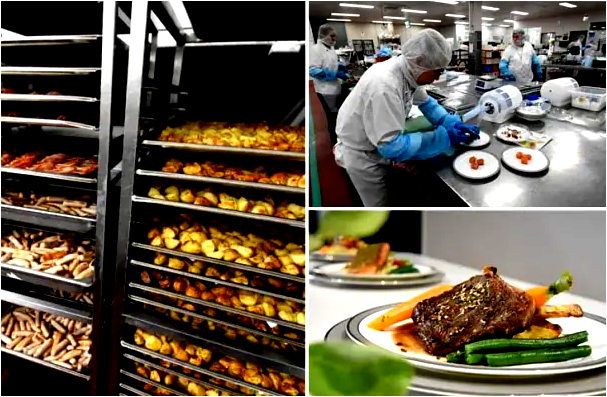
The French Fry Frontier: A Crunchy Symbol of Progress
American Airlines’ crispy fries—made with starchier potatoes and vented packaging—are a breakthrough. Travel advisor Michael Trager praised them as “shockingly good” on a Dallas flight. Delta now eyes avocado toast as its next target.
Expanding the story, fries represent broader innovation. Airlines test everything from sous-vide veggies to artisanal desserts. Each success, like Shake Shack’s burger, fuels confidence to tackle new challenges.
The humble fry isn’t just a side dish—it’s a symbol of sky-high ambition.
